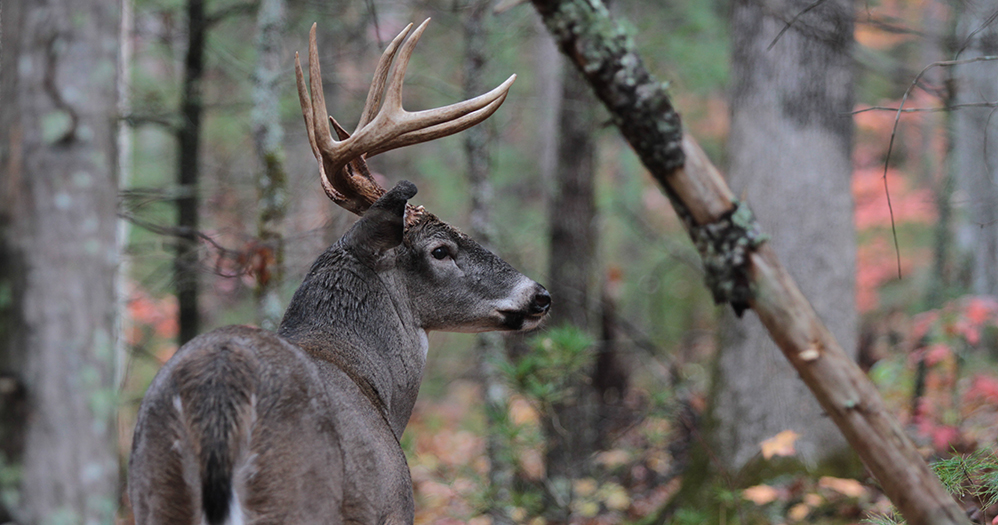Hunters request more oversight of deer depredation permits
Published 3:15 pm Wednesday, September 18, 2024

- MDWFP IMAGE
BROOKHAVEN — Hunters, land owners and managers brought concerns over deer depredation permits to the Mississippi Department of Wildlife, Fisheries and Parks Commission Wednesday. Commission Chairman Scott Coopwood vowed the department would look into the concerns and how to address them.
Bill Marcelo was the first gentleman to address the commission in a public comment period. He explained he has owned the same property in Yazoo County since 1995 and bought it for recreation. Over time, the deer population and number of hunters have increased in the area, he said.
Now, he sees a problem of oversight with deer depredation permits and the farmers who use animal control permits each spring to “protect,” their crops. The unchecked removal of deer around him has lowered property values by lowering the deer population, Marcello argued.
Trending
“I’m part of a group of property owners who have worked with a biologist. I hunt around 800 acres and I’ve noticed a decrease in deer,” Marcello said. “Biologists recommended I shoot 1 doe per 100 acres and four miles away, the recommendation is 1 doe per 25 acres. The farmers around my property have abused deer depredation permits. At this point, something has to change.”
What are depredation permits?
Deer depredation permits are issued under the Animal Control Permits which can be used for other nuisance wildlife such as coyotes, raccoons and beavers. MDWFP Deer Program Manager William McKinley said the Law Enforcement bureau issues the permits. Landowners are able to apply online for the permits.
McKinley explained officers in the county then do a site visit following the application and inspect for crop damage. Officers then make the decision if a depredation permit should be issued.
Russ Walsh, Wildlife Bureau Chief of Staff, said so far in 2024, 338 applications for animal control permits were received and a little over 200 permits were actually approved.
MDWFP used to publish annual deer program reports filled with data about how many deer were taken on WMAs, age structure for the state and included information about harvests of deer for animal control permits. The 2018-19 deer program report stated 253 animal control permits were issued in 2019 with 2,178 deer harvested in the spring across 37 counties. Hinds and Yazoo Counties led the state in animal control permits that year.
Trending
The report states that “extensive problems with agricultural depredation can normally be controlled with adequate antlerless harvest.” Deer depredation harvests account for 10 percent of statewide harvests and could have an impact locally but not across the state.
What is the solution?
Marcello suggested there were other ways for farmers to prevent deer from destroying crops and the animal control permits should be a last resort. He also pointed out the regulations for how farmers can use the animal control permits for deer were way too loose with the allowance of night vision and suppressors on firearms. He told the board he looked at Louisiana’s regulations and they only allow animal control hunting during the daytime.
Bill Kyle was the next concerned Yazoo County landowner to speak. He explained he owns 540 acres and converted his agricultural land to CRP and has seen a decrease in the quality of bucks.
His biggest concern was the negative impact he felt deer depredation permits have on his management efforts.
“I’ve found more dead deer this year than the past years. There were several bucks I found. I’m in DMAP and I’ve invested heavily. I hope my wife never finds out how invested I am in managing deer,” Kyle said. “DMAP allows me the opportunity to have biologist recommendations. It helps me create a history and monitor herd dynamics. I’m focused on being a good steward of my land.”
He said it is clear to him landowners in the area need to harvest more does. Kyle continued saying he understands deer can cause damage to agriculture lands but it is concerning to him when he finds them in the woods while turkey hunting and sees bucks killed in the spring before they start growing antlers.
He asked the commission to align deer depredation permits with DMAP and place more oversight. Like Marcello, Kyle stated depredation permits should be issued as a last resort and suggested the use of thermal optics and suppressors were an eradication of deer.
“We need to require harvest data for these deer. This is the deer herd, the data collected could allow us to understand the herd at a larger level. I think it would allow us to track CWD,” Kyle said. “There is a way to bring CWD monitoring into the equation. I would encourage depredation to be antlerless only. I’m asking the commission to help protect and preserve our white-tailed deer. My hope and wish is that the commission protects the resource.”
Abuse of the resource
Jase Shackleford was next to take to the podium. He said he has land in Holmes and Yazoo Counties and they find deer dead from gunshot wounds in the roads. His claim is that farmers are shooting deer in the guts for them to run off and die outside of the field. The meat is wasted and the deer die an inhumane death.
“It should be offensive to anyone in this building,” Shackleford said.
He raised questions about how the MDWFP could better track data, if hired guns are legal for animal control and if farmers are being checked for compliance with deer depredation.
Phillip King used a more emotional approach in his argument. He mentioned his son and how he taught him to be a steward of the outdoors. His son asked questions about how many deer they could shoot and how the resource was managed by MDWFP.
Naturally, his son’s next question was always why, why is there a limit, why do we conserve the resource? King said he did his best to explain that deer are a valuable resource and part of why they care for the land.
“Do I think I own the deer? No, it is not my deer, it is the state’s deer. They are the resources we invest in. We look at habitat and how we can make it better and we teach these lessons to our kids. You try to teach them we are doing nature’s work. We shoot a few deer but we grow more than we shoot. Farmers should abide by the same rules we do.”
The next steps
Coopwood thanked the speakers for bringing their concerns to the board. He said the speakers brought up some good questions for the agency.
“It gives us some great feedback to consider a lot, thank you for coming here and for making some points. They will not go unnoticed,” Coopwood said.
MDWFP Executive Director Lynn Posey said they can see they have a system which needs some work done in it. He said the commission would work with agency staff to come up with recommendations in the next few months for next spring.
Commissioner William Mounger said it was important to hear from hunters and landowners.
“The good news is no depredation permits are issued until early spring,” Mounger said. “We need to come up with recommendations and get those out for public comment before next season and come up with a good plan.”





